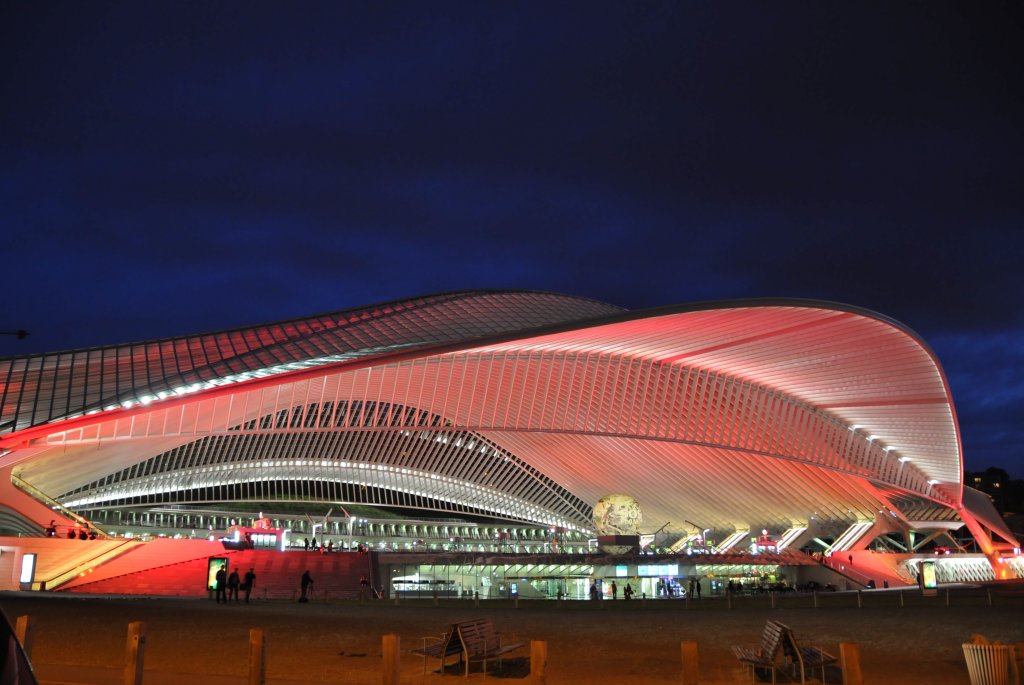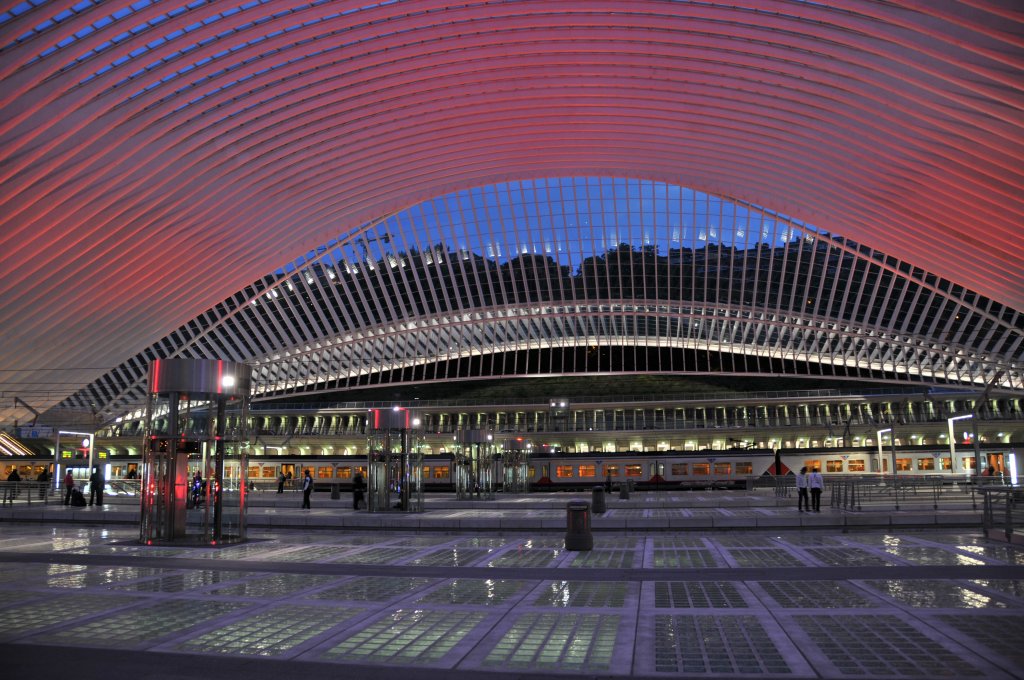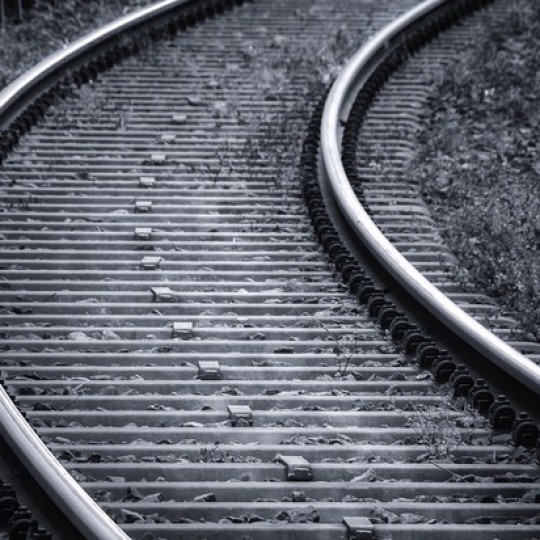Вокзал Льеж-Гийемен в Бельгии – жемчужина современной архитектуры
В городе Льеже, что в Бельгии, железнодорожных вокзалов несколько. Но именно Льеж-Гийемен стал символом новой эпохи. Несмотря на то, что он не первый и не самый крупный. Расположился этот удивительный по красоте архитектурный объект в юго-западной части города, вблизи живописного горного комплекса под названием Арденны. Ранее на этом месте был монастырь. Его здание и послужило основой для вокзала. Действует от с 1842 года, но раньше выглядел совсем иначе. Неоднократно подвергался реконструкции, пока в 2009 году не обрел современный неоготический дизайн.
Слово создателя
Испанец Сантьяго Калатрава Вальс, который создал это здание, в свое время победил в международном конкурсе на лучший проект. Его идею признали успешной и имеющей право на жизнь, другие 12 кандидатов остались не у дел. У Сантьяго уже был опыт строительства подобных объектов. Он проектировал вокзалы в Цюрихе, Лиссабоне, Лионе. Но этот проект стал настоящим вызовом для архитектора. Как сам он позже признавался, его целью было отразить огромный потенциал, который получили люди с вводом в эксплуатацию высокоскоростных поездов. Европа словно стала единой. Города, кажется, приблизились друг к другу географически. Возрос пассажиропоток. И, конечно, нужно было создать такой комплекс, который был бы и современным, и комфортным, и функциональным. У Сантьяго Калатравы все получилось.
Он создал уникальное здание без фасадов с крышей, словно растущей ввысь подобно грибу. Вокзал гостеприимно предлагал людям укрыться под этой крышей от непогоды, дождливой бельгийской зимы. Холмообразная форма крыши естественным образом продолжена рельефом местности за пределами здания. То есть вокзал существует не сам по себе, он словно вписан в окружающий ландшафт, являясь его продолжением.
Прозрачная крыша вокзала символизирует его открытость и доступность для всех.

Особенности конструкции
Несмотря на то, что архитектор не впервые проектировал здание вокзала, все его творения очень сильно друг от друга отличаются. Главная «фишка» Льеж-Гийемена – изящная волнообразная крыша и практически полное отсутствие стен. 39 стальных арок расположены непривычным образом. Как правило, их устанавливают поперек железнодорожных путей, а эти установлены вдоль. Протяженность перекрытий приблизительно 200 метров. Арочную конструкцию удерживают два пешеходных моста, расположенных над путями.
Такая крыша, несмотря на всю ее тяжесть и громоздкость, кажется воздушной, словно парящей над самим зданием.
Интересно, что устанавливали арки, не закрывая здание вокзала. Сперва их собирали на площади, а потом на выходных по ночам закрепляли над путями. При этом под ними сразу же могли проезжать поезда, движение в связи с проведением строительных работ не прекращалось.
Для оборудования крыши понадобилось 32 000 кв. м стекла. Сразу же была решена проблемы с мытьем. В арки вмонтировали специальные минирельсы, по которым ездят роботы-мойщики. Часть платформ также вымощена стеклоблоками. Это позволяет более эффективно использовать естественное освещение. Отражаясь от стекла, солнечные лучи проникают на парковку, расположенную в подземной части вокзала.
Для изготовления белоснежного шатра крыши потребовалась особая смесь (в количестве 70 000 куб. м) цемента, дробленого камня, песка и особых добавок. Такой состав сделал обычный бетон сияющим, словно пропитанным светом. Отсутствие прямых линий придало зданию особый шарм. По признанию архитектора, на создание такого здания его вдохновила красота женского тела, изгибы местной реки Маас и холма, расположенного в непосредственной близости от вокзала. У посетителей же часто возникают ассоциации с волнами, набегающими на берег. А если рассматривать комплекс в сочетании с самими железнодорожными путями, то это целый водопад. Особый эффект здание производит вечером и ночью, когда включается белая подсветка.
Красота – не главное
Архитектор, конечно, хотел создать красивое здание. Однако для вокзала главное – функциональность и удобство. И здесь Сантьяго Калатрава преуспел. Вокзал посредством мостов и виадуков сообщен с сетью автомагистралей. Таким образом транспортная инфраструктура города стала удобнее. С автобуса можно было сразу пересесть на скоростной поезд и уехать в другую страну.
А тем, кто должен был ждать своего поезда, было очень приятно находиться внутри вокзала. Здесь все создано для комфорта. Три 450-метровые платформы принимают двойные высокоскоростные составы из Франции и Германии. Другие две платформы чуть покороче – их длина 350 метров. Сразу за ними обустроена привокзальная автомобильная парковка имеющая выезд на автостраду (единственная в Европе).
Таким образом, вокзал Льеж-Гийемен стал неотъемлемой частью городской инфраструктуры. Когда потребовалось реконструировать городскую площадь, расположенную рядом, ее уже обустраивали под стать популярному транспортному узлу. Позже от вокзала в реке Маас проложили проспект, с которого можно было попасть на остров Бовери, часто называемый «музейным». Так две части Льежа – старинная и современная оказались сплетены в единую сеть. А связал их этот ультрасовременный архитектурный комплекс, который приносит людям огромную пользу.

Затраты
Строительство обошлось стране в 437 млн евро. Недешево даже по современным меркам. Однако это смотря с чем сравнивать. Когда мэру Льежа задали вопрос, а не слишком ли это большие затраты для местного бюджета, он ответил, что столько же стоит новый «Аэробус-380», но пользы вокзал принесет гораздо больше. И в его словах была правда. Вокзал служит людям с 2009 года, и это была очень выгодная инвестиция. Такое красивое здание привлекло в Бельгию туристов. И вокзал сам по себе стал отдельной достопримечательностью города. Теперь бельгийцы гордятся не только шоколадом и вафлями, но и удивительной красоты вокзалом.








